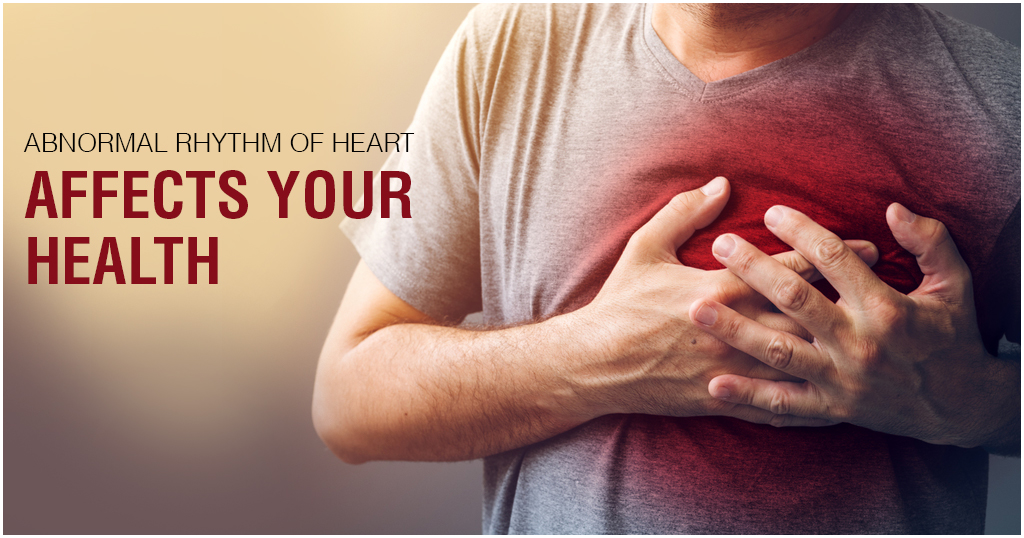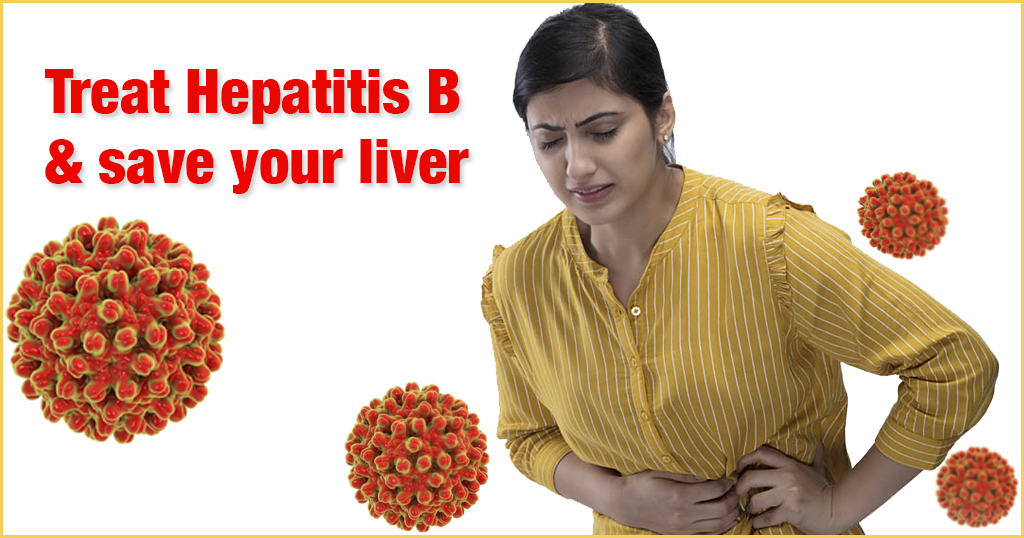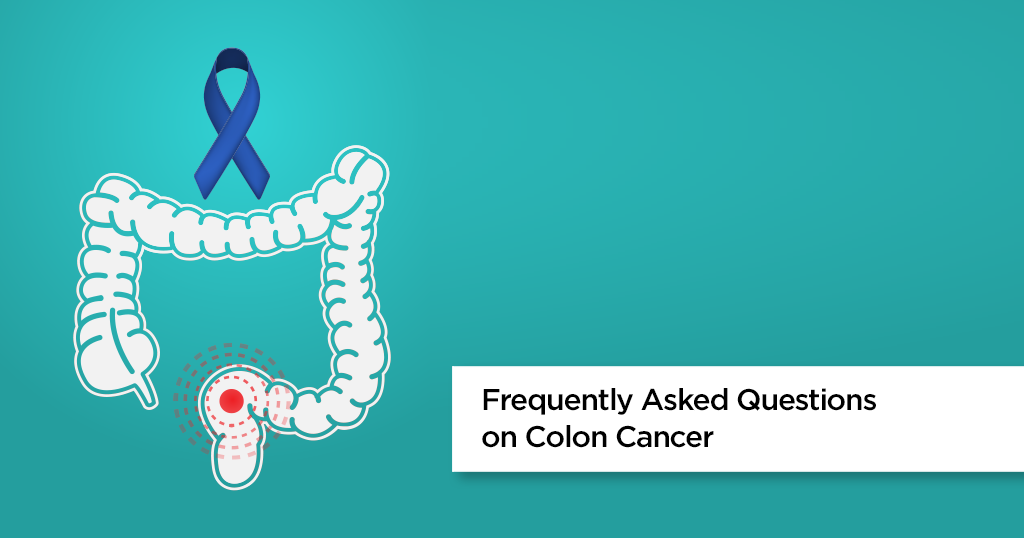Arrhythmia


Regular heartbeats occur because of internal electrical signals that cause the heart to contract and relax. This internal electrical system controls the rhythm and rate of our heartbeats. When that electrical system goes awry, your heart may either beat too fast, too slowly or irregularly.
This heart rhythm irregularity is called an Arrhythmia, which can range from few skipped heartbeats that could mostly be a mere annoyance to a racing heart that may cause long-term damage to the heart or may even turn out to be life-threatening.
These heart rhythm disturbances can be due to age, hypertension, heart attack, heart failure, thyroid and lung disease, etc. The most common symptoms include palpitation (fast beating), breathing difficulty, giddiness, unconsciousness or sudden death.
Arrhythmia treatments can often control or eliminate fast, slow or irregular heartbeats. In addition, because troublesome heart arrhythmias are often made worse — or are even caused — by a weak or damaged heart, you may be able to reduce your arrhythmia risk by adopting a heart-healthy lifestyle.
Types of Arrhythmias
There are different types of Arrhythmias. Doctors have broadly classified arrhythmias not just according to the speed of heart rate, but also according to the chamber of the heart (atria or ventricles) in which they originate.: Types of arrhythmias include:
This refers to faster heartbeats – resting heart rate more than 100 beats per minute.
- i) Tachycardias in atria(tachycardias originating in atria) include:
- a) Atrial fibrillation: It is a rapid heart rate due to chaotic electrical impulses in the atria. Atrial fibrillation is the most common arrhythmia in older people. It is linked to an increased risk of death and may lead to complicated conditions like stroke.
- b) Atrial flutter: Similar to atrial fibrillation, atrial flutter is also a rapid heart rate due to chaotic electrical impulses. But, in atrial flutter, the heartbeats are with more rhythmic electrical impulses and are more organized compared to atrial fibrillation. Atrial flutter may also lead to stroke and other serious complications
- c) Supraventricular tachycardia: This is a broad term that involves numerous forms of arrhythmia that originate above the ventricles (supraventricular) in the atria. The duration differs and is generally associated with a feeling of sudden rapid heartbeat.
- ii) Tachycardias in the ventricles(tachycardias originating in ventricles) include:
- a) Ventricular tachycardia (VT): Ventricular tachycardia is a fast, regular heart rate, which originates due to abnormal electrical signals in the heart’s ventricles. This is a life-threatening condition and therefore needs immediate treatment.
- b) Ventricular fibrillation: Ventricular fibrillation is a condition in which, the ventricles beat so rapidly that they are unable to pump blood to the heart, thus resulting in sudden death. It is predominant in people with weak hearts but may also affect those with normal hearts who may have genetic heart abnormalities such as long QT syndrome and Brugada Syndrome.
Premature Heartbeats
Generally, premature heartbeats are like a missed or skipped beat. Usually, they are harmless but if they recur frequently they may become a nuisance because of frequent symptoms and/or can lead to the weakening of the heart.
Bradycardia
Bradycardia is a condition that refers to a slower heartbeat that is less than 60 heart beats a minute at a resting condition. If you have a slower heart rate and if the heart is not pumping enough blood, you may have one of these bradycardias, including:
- i) Sinus node dysfunction: In this condition, the sinus node (the normal pacemaker of our heart), generates electrical current slowly resulting in heartbeat below 60 beats a minute. If this condition leads to symptoms like dizziness, weakness, loss of consciousness or fatigue, then treatment is required.
- ii) Conduction Block: This is a slow heartbeat caused by a block in the heart’s conduction pathways generally in the ventricles or near the AV (atrioventricular) node.
Arrhythmia can strike even if your heart is healthy or it can be due to:
- Injury from a heart attack or a heart attack perhaps happening right now
- Healing process after your heart surgery
- High blood pressure
- Diabetes
- Stress
- Smoking
- Sleep apnea
- Consuming too much alcohol or caffeine
- Changes in the heart muscle or heart’s structure (such as from cardiomyopathy)
- Heart disease, such as blocked arteries in the heart (coronary artery disease)
- Wrong balance of electrolytes like sodium or potassium in the blood
- Hyperthyroidism (overactive thyroid gland) or Hypothyroidism (underactive thyroid gland)
- Some medicines and supplements including OTC (over-the-counter) allergy and cold medications
- Some nutritional supplements
- Drug abuse
- Heredity
Arrhythmias may not have any visible signs or symptoms. Actually, your doctor may find out that you have an arrhythmia before you can identify it yourself, during an examination. And, visible signs and symptoms do not always mean you suffer from a serious problem. However, visible arrhythmia symptoms include:
- Chest pain
- Sweating
- Fainting or near fainting
- Slow heartbeat (bradycardia)
- Racing heartbeat (tachycardia)
- Fluttering in the chest
- Shortness of breath
- Giddiness or lightheadedness
The Bottom Line
It is important to lead a heart-healthy lifestyle to reduce your risk of arrhythmias or any other heart disease. Eat a heart-healthy diet, enhance your physical activity, quit smoking, maintain a healthy weight, and avoid or limit alcohol and caffeine to prevent heart diseases. Reduce stress, as intense stress and anger may cause heart rhythm problems. Also, use over-the-counter medicines with caution, as certain cold and cough medicines, including allergy medicines, have stimulants that may trigger a rapid heartbeat.
© Copyright 2024. Apollo Hospitals Group. All Rights Reserved.
 +91 8069991061
Book Health Check-up
+91 8069991061
Book Health Check-up







